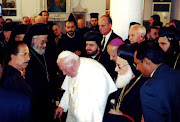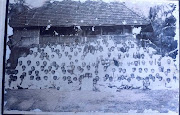THE MEPRAL ST. JOHNS JACOBITE SYRIAN ORTHODOX CHURCHOR
MEPRAL ‘VALLIYA PALLI’"Heaven is my throne, and the earth is my footstool. What house will you build for me? says the Lord or what is my rest? Has not my hand made all these things?" (Acts 7:47, quoting Isaiah 66:1-2).
Mepral St. Johns Jacobite Syrian Orthodox Church is commonly known as Mepral Valiya palli. Valiya palli means a large church, or a great church. But any one who has ever visited great churches of the world like Rome’s St. Peters Basilica, London’s St. Paul’s Cathedral, or even some of the well known churches in India, knows that our Mepral church is smaller than even the smallest chapels in any of these churches.
Still Mepral St. Johns Church is the Valiya palli or the Great Church for the members of the Poothicote family as well as to many others of Mepral origin.
Our family’s history is very much intertwined with the history of this church. The wooden bars suspended beneath the ceilings of this church, have witnessed many happy moments in the life of several generations of our family, like baptisms and weddings of their children. They also witnessed sad moments when they bid farewell to their dear ones at the funerals in this church.
For all the present members of the Poothicote family, many of their ancestors lie buried in the cemetery soil around this church, and for them, there is no doubt, it is the great church, the Vlliya palli, and it stands on hallowed grounds. So it is only proper that we try to take a peek in to the history of this church.
The written records and oral history received from our ancestors give us a very interesting opportunity to have a glimpse in to the life styles, religion, politics, and social customs of a bygone era.
Kochitty Kuruvila, (The Judge Great Grandpa), the ancestor of all the present Poothicote family members, was on his deathbed. On the Malayalam calendar date of 1021, Dhanu 3rd (AD 1851), he knew that the end of his earthly life was very imminent. His first biographer and grandson, Chavidiyil Koshy Kochitty Kuruvila has written about it.
All his children and grandchildren were around his bed. He asked what time it was. When someone told him that it was 4 in the evening, the Great Grandpa said to himself,
“There is no time to go to Niranam today.”
What he meant was if he died then, it was too late for them to take his body for burial in the Niranam Church on the same day, as the Niranam church was several miles away.
Before Mepral church was built, Niranam Church was the parish church for all Christians in Mepral and the surrounding areas. The tradition is that Niranam church is one of the seven churches established by St. Thomas, the Apostle in 52 AD. After Poothicote family moved to Mepral early in the 18th century, we had 3 priests from our family in the Niranam church in 3 generations.
A contemporary document of that period, Niranam Grandhavali, records about Poothicote Rev. Fr. Kuruvila Kunju Thommen who was the right-hand man and chief supporter of Malankara Metropolitan Dyonysius I ( 1765- !808) in a very troubled period in the history the Jacobite Syrian Orthodox Church in Kerala. The powerful and rich Thachil Mathu Tharakan who with the support of the king and other powerful government authorities, tried in vain to forcibly bring the Metropolitan and Kerala Jacobite Church under Roman Catholicism. While the Metropolitan valiantly resisted the move, the government under pressure from Tharakan, assessed huge unfair penalty against the Metropolitan and the Jacobite Church. According to Niranam Grandhavali written during the time, it was Poothicote Fr. Kuruvila Kunju Thommen who collected Rupees 20,000 and took it to Alleppy to pay the government treasury and save the Metropolitan and the church from the wrath of the government. Rs. 20,000 was a huge sum of money in 1801, equivalent to several millions today. But the Metropolitan and the Church trusted the Poothicote Kathanar that he will be able to raise this money and save the church from the unfair predicament of losing all the church properties in Kerala, and possibly having its Metropolitan imprisoned.
Poothicote family had a plot of land and a house near the Niranam church for the priests from our family to live there. The judge Great Grandpa later donated this land to the Niranam church.
During rainy monsoon seasons, it was very difficult for people from Mepral to go to Niranam church, especially for baptisms, weddings, and funerals. Judge Great grandpa before his death told his children that it was his wish that one day they will build a church in Mepral.
And that was his last request to his children.
In 1861, 10 years after the Great Grandpa’s death, his 3rd son, Cherian called all his brothers to his Puthen Purackel house and discussed how to realize the last wish of their father. There was a plot of land on banks of Mepral Pallithodu, a canal of Pampa river, belonging to Cherian and his brother, Medayil Kunjachonda. Both of the brothers agreed to donate the land to build a Church.
Payikandathil Papachen (Advocate George P. Cherian) has a copy of the records of this land deal from Alleppy District court in his possession.
The records show that an Ezhava family called Kondasseril was living in the property at that time. Kizhakeveetil (Elaviralil) Kochujachen, the 4th son of Judge great grandpa, agreed to relocate this family to one of his properties. Cherian and Kunjachonda transferred the title of the land to Kochujachen so that he could proceed with relocating the Ezhava family and get permission from the government to build a church. As was required at that time, 2 other people from Mepral, Azhimukhathu Cherian and Plamootil Chummar cosigned the request to the government for the permission for the church. .
To this day, the title for this property known as Kuppeadath purayidam where the present church stands belongs to the descendants of the Elaviralil branch of the Poothicote family. The government records show that the property is on plot 192/93/438, according to the land survey of 1837.
At the time this application for constructing the church was proceeding, Kaniyanthra, the other prominent Christian family in Mepral, was also trying to get approval for a church near the northern side of Mepral, closer to their houses. Approval was granted, but somehow the church was not built there, and the Kaniyanthra family later joined the St. Johns church. Kaniyanthra Kunjuthommi Kunjummen became a very active member of the church.
A temporary shed was built in the property and in 1861, (according to the Malayalam Era calendar, in 1036, on Vrichikam 18) and evening prayer service was first conducted in the temporary shed by the then Malankara Metropolitan, Palakunneth Mathews Mar Athanasius. The next day the Eucharist service was also celebrated here by the Metropolitan. On this visit to Mepral, Mar Athanasius stayed with the Puthenveetil Chackochen valliappan, the second son of Judge Great Grandpa.
It was the custom in those days that when a new church was started, the Holy Eucharist was celebrated every day for the next 41 days. Kottayam Edavazhikel Achen, Niranam Pallimukkil Achen, and Vennikulath Kakkuzhiyil Achen celebrated the Holy Kurbana during this period.
This was a period of great turmoil and controversy in the Kerala church. The young Palakunneth Mathews Mar Athanasius was consecrated as a bishop by the Patriarch of Antioch, His Holiness Ignatius Elias II in 1842 in Syria, and gave him the title and powers of the Malankara Metropolitan. The Metropolitan who was only 23 years old then, returned to Kerala in 1843. In a short time, many started worrying that he was leaning more towards the protestant reformation movement in the church sphere-headed by his uncle Palakunneth Rev. Abraham Malpan. There was also anxiety that the Metropolitan was shifting away from the Syrian Orthodox practices and traditions. Many resented this, and sent several complaints to the Patriarch. The Patriarch sent a delegate, a Syrian Bishop Euayakim Mar Coorilose, to Kerala in 1846 with the written permission to assume the administration of church if he felt that Palakunneth Mar Athanasius was moving away from the Jacobite faith.
After enquiries, the Patriarch asked Euayakim Mar Coorilose to assume the powers of the Malankara Metropolitan. Cheppad Mar Dyonysius, the former Malankara metropolitan before Athanasius, who was old and frail now, also requested the Patriarch for this transfer of power.
Judge Grandpa was originally with Mar Athanasius and he had great hopes in this well educated young bishop. In fact when Mar Athanasius returned from Syria as a Metropolitan, it was Judge Great Grandpa who took him to Thiruvananthapuram and introduced him to the then king, Maha Raja Swathi Thirunal.
But Judge Grandpa did not like the rough and tactless approach of the new bishop on many issues. For example, Grandpa was embarrassed when the young metropolitan refused to take his boots off on his first appointed audience with the king, as was the custom in those days. In spite of Judge Grandpa’s advice that he should respect the customs and traditions of the land, the English educated young Mar Athanasius thought it was below his dignity as a bishop to take boots off before the king. After this, there were only very few contacts between Judge Grandpa and Mar Athanasius. Grandpa was in Cochin to receive Euyakim Mar Coorilose when he arrived to investigate the actions of Mar Athanasius.
Euyakim Mar Coorilsose on several occasions was the guest of Judge Great Grandpa, staying in the guest house adjacent to his Moonnamadam house in Mepral. One of his granddaughters (daughter of his 2nd daughter Aleyamma, who was married in Chalakuzhiyil family) got married to the bother of Euyakim Mar Coorilose. The present Bishop of the Marthoma diocese in America, Euyakim Mar Coorilose is a great-great-great grandson of the Judge Great Grandpa.
Mar Athanasius refused to surrender his title and powers as the Malankara Metropolitan to Euyakim Mar Coorilose as ordered by the Patriarch. This resulted in a dispute that went before the government and a government committee decided in favor of Palakunneth Mar Athanasius. But the committee gave permission for any new churches built after this decision to choose the side they wanted. This decision came only a few weeks after Mepral Church was started in a temporary shed. It is said that people changed the roof of the church overnight and claimed that theirs was a new church. Three months after Palakunneth Athanasius conducted the first service, people brought Euayakim Mar Coorilose on AD1861, ( ME.1036, Makaram 6th) and the foundation stone for the church was laid. The next day Mar Coorilose celebrated the Holy Eucharist in the temporary church. The church was dedicated on that day in the name of St. John, the Baptist.
Edavazhikal Fr. Kuriakose and Ayiroor Chemprontha Fr. Scaria conducted the regular services as there were no priests in Mepral at that time.
The Corepiscopa, Very Reverend Poothicote Cherian Thomas (1846-1912), the son of Poothicote Puthen Purackel Cherian valliappan, was ordained as a deacon by the Patriarchal delegate Euayakim Coorilose in 1862 (ME 1037 Dhanu 22). Fr. Cherian Thomas is commonly referred as the great Poothicote Achen by his contemporaries.
In the meantime Kaniyanthra Padijareveetil Fr. Joseph Ninan often helped with the services in the Mepral church, though at that time he was one of the vicars of the Niranam and the Thalavadi churches. Fr. Ninan was married to Annamma, the youngest daughter of Judge, Great Grandpa. For this wedding a Dowry of 300 rasis were given to Ninan who was a deacon at that time. That was the largest amount of dowry given to bridegroom those days.
Rasi is a small gold coin. 10 silver coins make one rasi. The rasi was so small that it could be hidden in the mouth if approached by robbers or bandits.
It was only natural that Cherian Valliappan and his brothers sought the help of their brother-in-law, Fr. Ninan for the services in the Mepral church. Further, this Kaniyanthra Ninan Achen was a staunch supporter of the Patriarchal delegate, Euayakim Mar Coorilose and valiantly stood for the Jacobite Orthodox faith. He strongly objected to the reformation ideas of the Malankara Metropolitan, Palakunneth Mar Athanacius.
In the meantime, deacon Poothicote Cherian Thomas completed his education in Kottayam Old Seminary and in due course got ordained as a priest. As the first vicar of the St. Johns Church, Poothicote Achen was a great success. As an eloquent speaker and organizer, Achen led the church very successfully, and became an eminent leader of the Christian community in Central Kerala. He was very dedicated to the Jacobite Orthodox faith and traditions like his father Cherian valliappan, and his uncles.
During the Mulamthuruthy Synod of all representatives of Orthodox Jacobite churches in Kerala, called by Patriarch Ignatius Peter III in 1876, Mathew Chathanthra, the elder brother of Poothicote Achen represented the Mepral church in the synod meetings, and his signature appears on the records. According to the same records, Kaniyanthra Padijareveetil Rev. Fr. Ninan represented the Niranam and the Thalavadi churches in the synod.
The relations between Poothicote Achen and Kaniyanthra Fr. Ninan were very cordial. After all, Fr. Ninan was married to Poothicote Achen’s father’s sister. Further, Poothicote Achen’s wife Kunju Mariamma was the daughter of Fr. Ninan’s younger brother Varkey of Kaniyanthra Thazhathu family.
The present church building with bricks and roof tiles was built in 1883 when Poothicote Achen was the vicar.
When the church was built, cement was not available in Mepral There is a story about what they used instead of cement to seal the bricks. They were using powdered lime stones and a special slime, the sticky liquid that comes out of the skin of a common fish in Mepral called varal. It is beyond imagination to think how many varal fishes they caught so that all the bricks in the church could be sealed...
Poothicote Achen had very cordial relations with the saintly diocesan Metropolitan Parumala Mar Gregoriose (1848-1902). Before Mar Gregoriose left for his journey to the Holy Land in 1895, he was invited to Mepral church and a contribution was made towards the expenses for his journey.
Unfortunately Parumala St. Gregoriose died in 1902 at the age of 54. After that Ramban Vattasseril Ghevarughese became the right-hand man of the then Malankara Metropolitan Joseph Pulikkotil II.
Kaniyanthra Padijareveetil Fr. Ninan passed away in 1892 and he was buried in the Mepral church cemetery. His position in the Mepral church was taken over by Kaniyanthra Vathapallil Fr. Ninan. He was also a priest in the Niranam church. He was an unmarried monk and he later moved his residence to Mepral and was conducting services in the Mepral church on alternate Sundays
Vattasseril Ramban became very close to this Kaniyanthra Achen. He made some unannounced visits to Mepral church which Poothicote Achen did not approve of. Ramban’s position is not any higher than a parish priest in the church hierarchy except that Ramban takes an oath of celibacy. Rambans have no powers over a parish priest.
One time Vattasseril Ramban came to the church on a Sunday unannounced and demanded to conduct the Eucharist service and Poothicote Achen refused permission. Vattasseril Ramban angrily returned to Kottayam and made some allegation against Poothicote Achen to the Malankara Metropolitan, Pulikkotil Joseph Mar Dyonysius II. This resulted in the suspension of Poothicote Achen in 1904 by Pulikkotil Mar Dyonysius.
We have to view the situation of Poothicote family on church matters at that time with circumspection. Unlike Kaniyanthra family where all its members stayed with the Jacobite Orthodox faith, in the Poothicote family, the reformation movement of Palakunneth Athanacius had some effects.
At least 3 sons of Judge Great Grandpa, Puthenveetil Chackochen, Medayil Kunjachonda, and Chavidiyil Kochu Koshy favored some reformation in the Jacobite church. Closeness of several of our Valliappans to Palakunneth Mar Athanacius and the British missionaries made them longing for some progressive changes in the church. It should be noted that this was before the protestant Marthoma church and St. Thomas Evangelistic Association was officially formed in 1889 in Kerala.
Palakunneth Mathews Mar Athanasius died in 1877. Though Mar Athanasius had some inclination towards the reformation movement of his uncle Fr. Abraham Malpan, he lived and died in the Jacobite Orthodox Church. Most of the time he followed the orthodox Syrian liturgy, and at the ordination of priests, he instructed them to be faithful to the church and to be obedient to its spiritual head, the Patriarch of Antioch. There is no evidence that he was ever officially excommunicated from the Church by the Patriarch.
Though reform minded, Mar Athanasius was very zealous in keeping the traditions of his ancient church. An anecdotal story in our family, which I have heard in my younger years about him from the older people, sheds some light on this. The story goes like this.
It is an important tradition in the Jacobite Church that though a deacon of our church can marry, once after a deacon becomes a priest, he can not marry. Priests also can not remarry even if they become widowers. A priest’s widow is also forbidden to remarry. Palakunneth Mar Athanacius insisted that everybody in his church obeyed these ancient traditions of the Syrian Church.
Poothicote Medayil Kunjachonda was a very religious and devoted person, and he was also one of the first English educated persons in Kerala. He was very close to the English missionaries and somehow he married a widow who was formerly married to a priest. After this marriage, one day he visited Palakunneth Mar Athanasius in the Niranam Church. The Metropolitan was very angry and temporarily lost his temper, and hit Kunjachonda with his hand, shouting that a priest’s wife should be like a mother for the church members, and no one should remarry her even if she becomes a young widow. Kunjachonda as usual was very clam and quite in spite of the provocation from the Metropolitan. But his brother Kizhakeveetil Kochujachen was watching this from a distance and he really got angry and approached the metropolitan. Metropolitan who realized the danger of the situation held on to both hands of Kochujachen and whispered in his ears, “Please, do not humiliate me before the public. Let us go inside and talk.” Both of them calmed down soon, and each apologized to the other for the angry behavior.
Though Poothicote Achen was strongly on the Jacobite Orthodox faith, he was very considerate about the views of his uncles and cousins about the reformation. Also Poothicote Achen conducted services at least in part in Malayalam, when most other priests were conducting services in the Syriac language only. This lead to the allegations that he was using the reformed liturgy of Palakunneth Abraham Malpan, and that he was a secret follower of Mar Athanasius. It should be noted that apart from some progressive views of reformation, Palakunneth Athanacius was highly respected by all in Central Kerala for his social and political leadership of the Christian community as a whole.
The Mepral Marthoma Emmanuel Church was built only in the beginning of the 20th centaury and till then St. Johns church was the parish church for all members of the Poothicote family. The Poothicote Achen was the vicar for all of them till the Marthoma Church was formed in Mepral.
Metropolitan Joseph Pulikotil Mar Dyinysius was from the northern part of Kerala, who could not appreciate the social and family ramifications of the church dispute in Central Kerala. So it was under the persuasion of Vattasseril Ghevarughese Ramban, who had an axe to grind against Poothicote Achen, that Achen was suspended by Pulikotil Mar Dyunysius in 1904.
Poothicote Achen refused to accept the suspension. This resulted in a division in Mepral church. One group was supporting Poothicote Achen and the other group was supporting Kaniyanthra Achen. Kaniyanthra Achen had the blessings of Ramban Vattasseril Ghevarughese. The dispute resulted in several clashes and the Mepral church was soon closed by the order of the court.
But on orders of Patriarch Ignatius Abdullah II, a compromise agreement was reached between Poothicote and Kaniyanthra sides after much negotiation.
According to this agreement dated on (Kanni 29), 1910, and recorded in the Alleppy district court as a compromise in case no. 1076/268, both sides agreed to be under the spiritual supremacy of the Patriarch of Antioch and to obey the bishop appointed by him.
In 1909 Pulikotil Joseph Mar Dianasius died and Vattasseril Ghevarughese Ramban was consecrated as Malankara Metropolitan with the title Ghevarughese Mar Dianasius by the Patriarch of Antioch, Ignatius Abdullah II.
After getting ordained as Malankara Metropolitan, Vattasseril Mar Dianasius started to rebel against the Patriarch himself.
On his visit to Kerala in 1909, the Patriarch asked Poothicote Achen, Kaniyanthra Achen, and Vattasseril Mar Dianasius to appear before him in the Puthupalli church. All of them obeyed the order and appeared before the Patriarch. After a full investigation, the Patriarch excommunicated the Kaniyanthra Achen for disobedience and violations of the cannon laws of the Church. Poothicote Achen was elevated by the Patriarch as a Coepiscopa for steadfastly following the Orthodox faith of the church, and he was asked to continue as the vicar of Mepral church. The prominent Rev. Konatt Malpan, the priest trustee of the Jacobite Association in Kerala also applauded the strong stand taken by Poothicote Achen.
Soon Vattasseril Mar Ghevarughese was also excommunicated by the Patriarch from being the Malankara Metropolitan for rebelling against the traditional practices and the authority of the Patriarch as the spiritual head of the Church. Later in 1912, Vattasseril Mar Dianasius caused a permanent schism in the church by establishing a Catholicate in Kerala independently of the parent church in Antioch.
People who continued in allegiance to the Patriarch of Antioch were known as Bava Party and those followed Bishop Vattasseril Mar Dianasius were called Metran Party. (After 1972 separation, they are known as Jacobite Syrian orthodox Church and Indian orthodox Church respectively.)
In Mepral, Poothicote family stood with the Bava party and the Kaniyanthra family by Metran party.
When these things were happening, Mepral church was closed by the order of the court. But the Patriarch gave permission to Poothicote Achen to conduct the Eucharist and other sacramental services at his home for the faithful.
Poothicote Cherian Thomas Achen died in May, 1912 (ME Makaram 7). Though church was closed at that time, it was opened for his burial services, which were conducted by Chathanthra Achen and Aviyot Achen.
Poothicote Chathanthra Rev. Fr. P. M. Abraham followed as the vicar on the Patriarchal side. He was ordained as a priest by Patriarch Ignatius Abdullah II in 1912 in Alway seminary church.
In 1917, Kaniyanthra Vathapallil Ninan Achen also died and the Kaniyanthra Alexander Corepiscopa became the vicar on the metran party.
Fortunately Fr. Abraham and Fr. Alexander were priests with great vision and Christian love. In spite of the controversies and cases between the Bava party and Metran party going on in other churches in Kerala, these two priests cooperated and conducted services on alternate Sundays in Mepral Church very peacefully.
Chathanthra Achen (Fr. Abraham) was an educated and cultured soul. He was born in 1885. He took the ministry as a God’s calling and followed the dictates of his conscience. His sermons were very short, but very powerful. He encouraged children to study well and improve their chances in life. When ever I met him when I was a young boy, he enquired about my grades, and urged me to be the best in the class.
He also had a very realistic view about the conflict in the church. I remember talking to him one day about the church controversies. At that time I was a junior physician, and was in a medical team that treated Mar Augen Catholicose during a major illness. I came to Mepral on holidays and visited the Chathanthra Achen appachen as I called him. He told me he was in the group that visited the Holy land with Augen Ramban, Vattasseril Ramban, Poulose Coorilose, Kallaseril Punnose Remban and Fr. Kuriakose Kodiyattu in 1908. It was during this visit that Vattasseril Ramban was consecrated as Metropolitan Ghevarughese Mar Dianasius by the Patriarch Ignatius Abdullah II. He considered the dispute in the church as personal quarrels and ego trips by a few. He always prayed and hoped that the dispute in the Kerala church will one day be amicably solved.
It was Fr. P.M. Abraham who built an annex building in the church compound in memory of his predecessor, Very Rev. Poothicote Cor- Episcopa Cherian Thomas in 1929.
People of Mepral will ever be indebted to Kaniyanthra Corepiscopa, the Very Rev. Alexander for starting the first English school, the St. Johns English Middle School, in Mepral. He was instrumental for many good things in our community including starting the first post office in Mepral. He was in the forefront of many of the social and educational programs in our village. I still remember him visiting our house when I was very young and how gentle and loving he always was. Factions with in the church never affected his dealings with people. One of his daughters, Kunjaliamma was married to Baby of Poothicote Pathinettil family. Fr. Alexander died on Nov.25, 1955.
The love and respect of these two priests to each other, though they belonged to the opposite side in the church controversy, is best illustrated in the following.
The chief celebrant at the wedding ceremony of Fr. Abraham’s eldest son, Baby was Kaniyanthra Alexander Achen. Poothicote Abraham Achen was always there whenever and wherever Kaniyanthra Achen needed him in all his public activities.
There is another story that illustrates Poothicote Abraham Achen’s generosity and large heartedness. The story was told to me by Rev. Fr. K. Philipose (Late Philipose Mar Theophilose of the Indian Orthodox church). His mother was from Poothicote Payikandathil family.
This was a time when tension was very high between the two factions in the church dispute. Fr. K. Philipose came to attend a wedding of his cousin from the Poothicote Payikandathil family in the Mepral church. The priest who was the chief celebrant of the wedding ceremony on that day was a well known leader on the Patriarchal side from a neighboring church. When he saw Fr. Philipose in the church, he told him that he could not participate in the wedding service, as he was from the metran side. With great disappointment and sorrow, Fr. Philipose went outside the church and waited in front of the parsonage. At that time Poothicote Fr. Abraham was coming to the church and enquired why Philipose Achen was standing outside. When he heard the reason, he went inside the church and told the guest priest that if Fr .K. Philipose is not allowed to join the service, he was also not going to participate in the ceremony. The guest priest was forced to go outside and apologize to Fr. Philipose and bring him in to join the service.
There was peace in the Kerala church following the Patriarchal visit to India in 1964 by His Holiness, Ignatius Yacob III. It was during this visit Augen Mar Themothiose was installed as Catholicose by the Patriarch of Antioch, and both factions accepted Mar Augen as their Catholicose. Poothicote Fr. Abraham died in 1965 when this peace was prevailing in the church, as he always prayed and hoped for.
Following the death of Fr. Abraham, Poothicote Payikandathil Fr. George Kurian became the vicar of the church. Fr. George Kurian was a devout and saintly person, but his allegiance to the Patriarch of Antioch was unalterable. He was ordained priest by Poulose Mar Philexinose (Later Catholicose Mar Basaliose Poulose II). As there was a temporary peace in the Malankara church, he became the parish priest for both the sides from 1964 to 1974. As the vicar of the church, he was highly respected and loved by all. He was there always for the poor and the sick irrespective of religious or factional differences, and he worked hard for the general improvement of the Mepral village.
By 1972, there were again disputes in the Kerala church. A group from the previous metran party wanted to severe all connections with the Patriarch of Antioch, and make the Kerala church an independent autocephalous church. This was against the sane advice of many elder leaders even on the Indian Orthodox side, like K.M. Cherian, the chief editor of Malayala Manorama, and bishop Philipose Mar Theophilose. K.M. Cherian has told me on several occasions how pained and saddened he was, as the peace he longed for and worked for a lifetime slipped away during the evening years of his life. The vocal extremist groups finally won, and the church was divided in to two factions again.
It was at this time that Poothicote Payikandathil Fr. George Kurian (1935-1995) was consecrated as Metropolitan Kuriakose Mar Coorilose by the Patriarch of Antioch in Damascus in 1974.
The Indian Orthodox faction refused to accept him as their bishop. This again resulted in controversies and litigation in the Mepral church, and it still continues.
Arrangement of worship services in the church continues by an agreement by both parties. Both conduct Eucharist services in the Church on different times on each Sunday.
In course of time Poothicote Kuriakose Mar Coorilose became a highly respected and revered bishop in Kerala by Christians and non- Christians alike. Unfortunately Bishop Mar Coorilose passed away on March 21, 1995, when he was only 60 years, and his mortal remains were interred in the Adoor Jacobite church.
After the division in 1972, the Indian Orthodox faction in the Mepral church was lead by Kaniyanthra Arumapettiyil Fr. Job Thomas. Later he was consecrated as Job Mar Philexinose, and presently he is the bishop of the Indian Orthodox Church in New Delhi.
Except for the factional controversy on church matters, the Poothicote and Kaniyanthra families were together in most other things. There were so many intermarriages between these two families during the past 7 generations. If one looks at the lineage of the members of the Poothicote family, many of them are likely to have a mother, grandmother, great-great-grandmother, or great- great-great-great grandmother from the Kaniyanthra family. Same is true of a large number of Kaniyanthra family members who will have a matrilineal link to the Poothicote family. Even when there were controversies, these two families cared, shared, and helped each other as they lived together in the same village for almost 300 years.
Often times in the past, the factional fighting at our local level was nothing more than a fun game of rivalry between two well to do feudal families whose men had a lot of leisure time at their disposal.
My grandfather Kunju Varkey, as he was nearing 90 years, told me a story that will illustrate this point.
One day in 1906, there was a heated argument between the Poothicote and Kaniyathra family members in the church, and my grandfather’s older brother Kunju Thekapurackel was also involved in the heated exchanges. Someone rushed to my grandfather who was at home at that time, and told him that his brother was involved in an altercation with Kaniyanthra family members. My grandfather very gently told the one who brought the news, “They may be having a little fun there after working all week. Even if there is an altercation, my brother is with his maternal uncles form Kaniyanthra family. They will protect him, but they also have the right to discipline him if they choose to do so. But if anyone does any thing wrong to you, please let me know, and I will make amends for that.” Nothing untoward happened that time.
Today most members of the Kaniyanthra family also have left Mepral village as Poothicote family did, looking for better pastures. But there is a lingering sense of love and bondage between the members of these two ancient families where ever they live.
The history of communities, institutions, and even churches, are often determined by events beyond the control of men. I have often wondered, what if the Saintly Parumala Mar Gregoriose did not die in 1902, but outlived Pulikkotil Mar Dyonysius II, and became the Malankara Metropolitan. The disputes in the Mepral church or that even in the Kerala Syrian Orthodox Church would never have happened in such a scenario.
Bava party versus metran party cases have lasted almost a centaury, litigated by the best legal brains in India, and it has involved four generations, and it is still continuing, matching very few other litigations in the history of jurisprudence.
But who can second-guess the imponderable wisdom of the Eternal One, who guide and direct the destinies of ordinary imperfect men?
Then, if the church had only perfect members, none of us could ever be its members.
In spite of all the imperfections of the past and present, Mepral St. Johns Church is dear and near to the hearts of many from Mepral, and especially to the members of the Poothicote family.





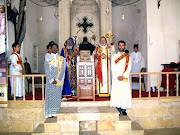.jpg)
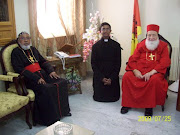.jpg)
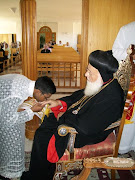.jpg)
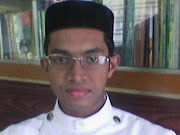.jpg)
.jpg)

.jpg)







